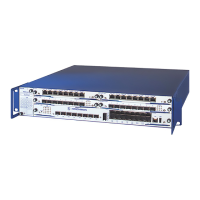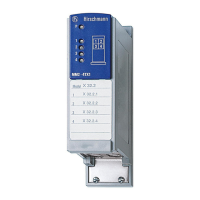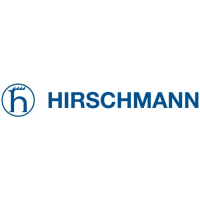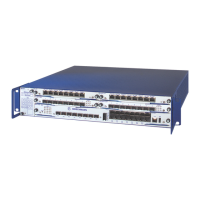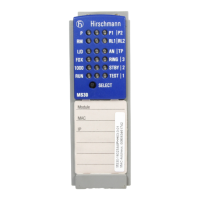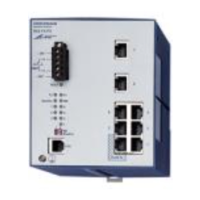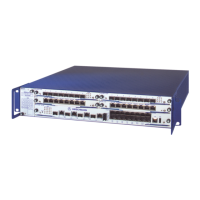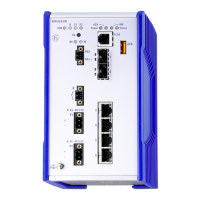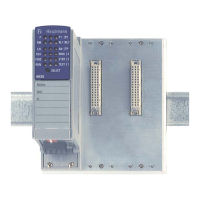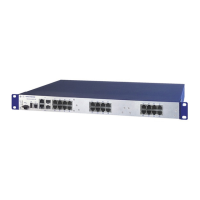50
© 2001- 2006 Hirschmann Automation and Control GmbH. All Rights Reserved.
5.3 Class of Service (CoS) Commands
This chapter provides a detailed explanation of the QoS CoS commands. The following commands are
available.
The commands are divided into these different groups:
z Configuration Commands are used to configure features and options of the switch. For every con-
figuration command there is a show command that will display the configuration setting.
z Show commands are used to display device settings, statistics and other information.
Note: The 'Interface Config' mode only affects a single interface, whereas the 'Global Con-
fig' mode is applied to all interfaces.
5.3.1 classofservice dot1p-mapping
This command maps an 802.1p priority to an internal traffic class. The userpriority and trafficclass can
both range from 0-7.
Format classofservice dot1p-mapping <userpriority> <trafficclass>
Modes Global Config
5.3.1.1 no classofservice dot1p-mapping
This command restores the default mapping of the 802.1p priority to an internal traffic class.
Format no classofservice dot1p-mapping
Modes Global Config
5.3.2 classofservice trust
This command sets the class of service trust mode of an interface. The mode can be set to trust one of
the Dot1p (802.1p) or IP DSCP packet markings.
Format classofservice trust dot1p
Mode Global Config
Interface Config
5.3.2.1 no classofservice trust
This command sets the interface mode to untrusted, i.e. the packet priority marking is ignored.
Format no classofservice trust
Modes Global Config
Interface Config
5.3.3 cos-queue max-bandwidth
This command specifies the maximum transmission bandwidth limit for each interface queue. Also
known as rate shaping, this has the effect of smoothing temporary traffic bursts over time so that the
transmitted traffic rate is bounded. The switch supports 8 queues per interface. A value from 0-100
(percentage of link rate) must be specified for each supported queue, with 0 indicating no maximum
bandwidth is in effect.
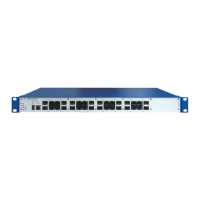
